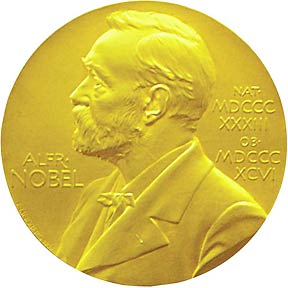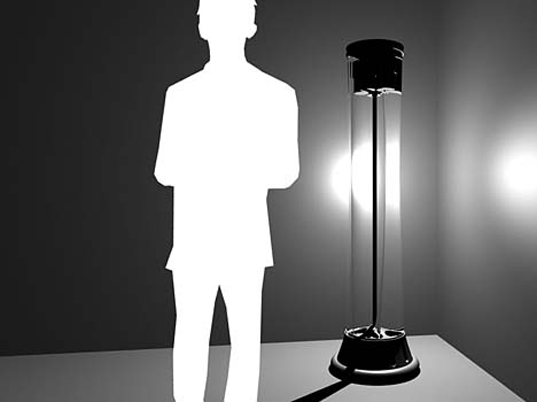Entries Tagged 'Science' ↓
March 7th, 2008 — Books, Controversy, Medicine, Science

Wow: Can you believe anything anybody writes any more?
The New York Times is still reeling after their gut-felt rave over the book Love and Consequences, and loving profile of its author, Margaret B. Jones. Love and… is Jones’ memoir of her life as a scrappy, foster white girl, growing up wild with the Bloods in the streets of South Central LA.
Meanwhile, Consequences are what her behind, the Times, and he publisher, Riverhead/Penguin, are feeling right this instant.
We now know that “Margaret B. Jones” is actually—get this—Margaret Seltzer. (Wow…does it get any whiter?) Instead of being dragged through inummerable foster homes, Seltzer was raised by both parents in the well-heeled San Fernando Valley. As opposed to ducking in and out of violent, drug-infested Compton alleyways, she spent her teen years ducking in and out of private Episcopal school hallways. Instead of gangs, she had her hair in bangs…o.k., I’m going too far, now, but you get the point: She made up the whole 296 pages.
But did a group of eminent medical researchers, including a Nobel Prize-winner, just get caught doing the same thing?
Continue reading →
March 6th, 2008 — Design, Energy, Environment, Science

Did a young and promising clean-energy consortium just give a big prize to the wrong guy?
This cool “gravity-based kinetic energy lamp,” Gravia, above, by designer Clay Moulton, placed second at the Greener Gadgets Conference (GGC)’s design competition, held here in New York City, on February 1.
Said the contest summary,
The driving idea of Gravia is that light is generated when the user raises weights from the bottom to the top of the lamp. As the mass slowly falls it spins a rotor. The energy created by the movement is harnessed by an internal mechanism to make electricity. Ten high-output LEDs light the four foot high acrylic column with a diffuse glow (600-800 lumens) for about 4 hours of ambient light.
You can see a schematic here.
Obviously, using gravity for power means environmental cleanliness exceeding the surgical. Gravity is a fundamental, universal force, everywhere, free, abundant.
But there’s a problem with the prize-winning Gravia, a big one:
Gravia isn’t actually manufacturable: “The criticism is that a great deal of weight –- tons — would be required [for it to work] and [, as well,] current LEDs are not sufficiently efficient.” Designer Clay Moulton has acknowledged this fact and says that [“]the current design is probably not possible given current LED technology, but could be soon.”
Continue reading →
March 3rd, 2008 — Books, Medicine, Science
 If I could have been anywhere other than with you, last week, it would have been in Monterey CA at the TED Conference. TED stands for Technology, Entertainment, Design, and the event, held annually since 1984, thrives on bringing together disparate thinkers from diverse fields to ask less-than-obvious, critical questions about ideas. Big-picture stuff.
If I could have been anywhere other than with you, last week, it would have been in Monterey CA at the TED Conference. TED stands for Technology, Entertainment, Design, and the event, held annually since 1984, thrives on bringing together disparate thinkers from diverse fields to ask less-than-obvious, critical questions about ideas. Big-picture stuff.
Of course, people from WIRED went, and one, Kim Zetter, brought back this report of a presentation by Dr. Jill Bolte Taylor, a Harvard-trained neuroanatomist with the Indiana University School of Medicine in Bloomington. I’d not heard of Dr. Taylor before this piece, but now, man, I’ve got to get this woman on NONFICTION, my WBAI-NY radio show.
 See, on December 10, 1996, Taylor woke up to realize that she was having a stroke—a rare type called an arterio-venous malformation or AVM. What makes the episode odd, yet captivating, as Taylor recounts it, says Zetter, is that her
See, on December 10, 1996, Taylor woke up to realize that she was having a stroke—a rare type called an arterio-venous malformation or AVM. What makes the episode odd, yet captivating, as Taylor recounts it, says Zetter, is that her
knowledge of the brain made her the perfect witness to her body’s gradual shutdown. Over the course of four hours she watched her body deteriorate in stages, all the while processing its breakdown as if she were a curious explorer taking field notes.
Yet, at first, she didn’t realize what was happening to her. So after feeling searing discomfort in her head,
Continue reading →
February 26th, 2008 — Energy, Environment, Science
 Thinking about the kind of power we might one day derive from the movement of open water has me amped. This is from an Associated Press article, “Oceans eyed as new energy source,” running Feb. 14:
Thinking about the kind of power we might one day derive from the movement of open water has me amped. This is from an Associated Press article, “Oceans eyed as new energy source,” running Feb. 14:
Just 15 miles off Florida’s coast, the world’s most powerful sustained ocean current — the mighty Gulf Stream — rushes by at nearly 8.5 billion gallons per second. And it never stops.
To scientists, it represents a tantalizing possibility: a new, plentiful and uninterrupted source of clean energy.
Continue reading →


 If I could have been anywhere other than with you, last week, it would have been in Monterey CA at the
If I could have been anywhere other than with you, last week, it would have been in Monterey CA at the  See, on December 10, 1996, Taylor woke up to realize that she was having a stroke—a rare type called an arterio-venous malformation or AVM. What makes the episode odd, yet captivating, as Taylor recounts it, says Zetter, is that her
See, on December 10, 1996, Taylor woke up to realize that she was having a stroke—a rare type called an arterio-venous malformation or AVM. What makes the episode odd, yet captivating, as Taylor recounts it, says Zetter, is that her Thinking about the kind of power we might one day derive from the movement of open water has me amped. This is from an Associated Press article, “Oceans eyed as new energy source,” running Feb. 14:
Thinking about the kind of power we might one day derive from the movement of open water has me amped. This is from an Associated Press article, “Oceans eyed as new energy source,” running Feb. 14: